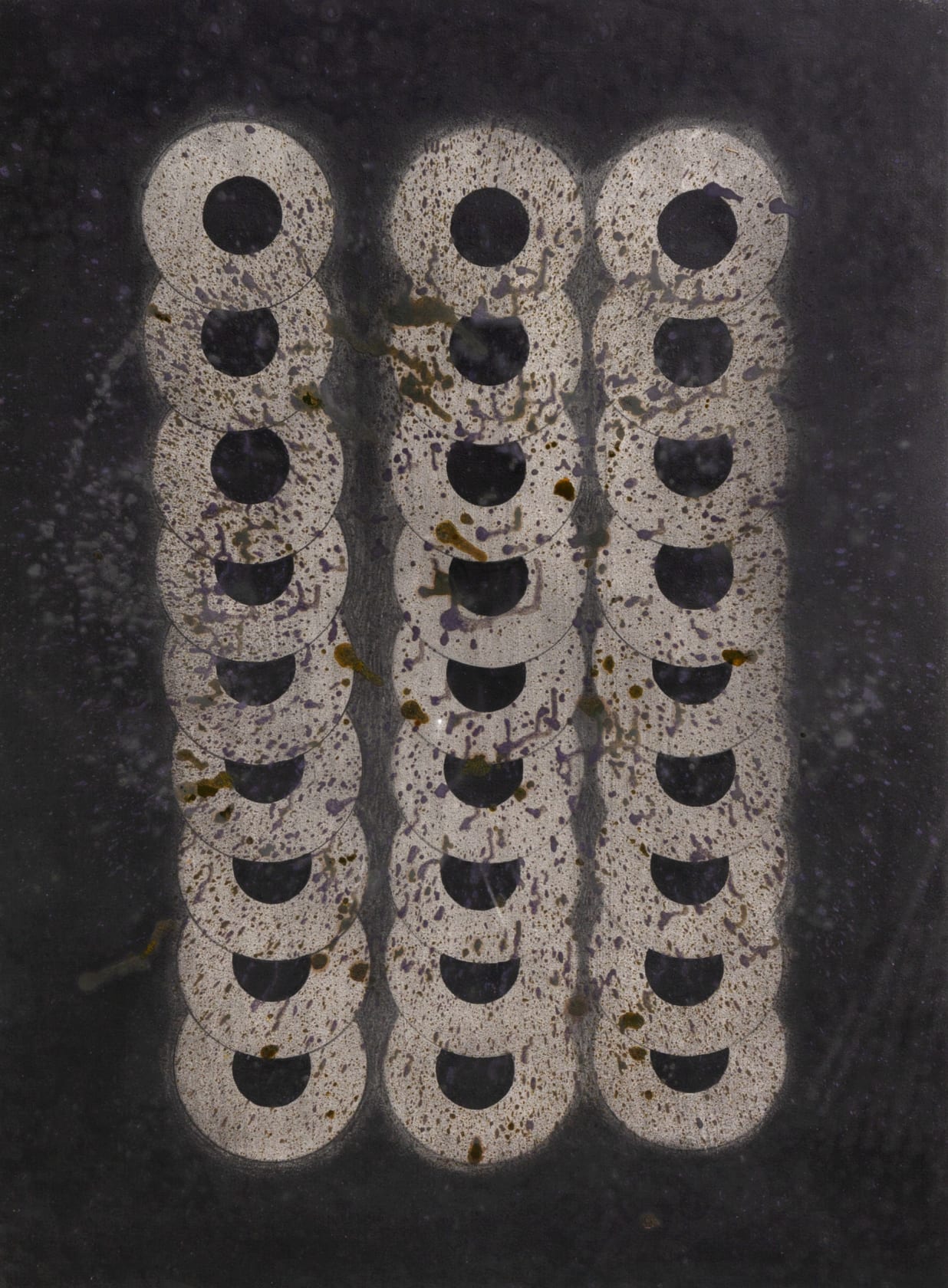

Paul Neagu Unnamed (London), 1990
Romanian-born artist Paul Neagu (1938-2004) had a philosophical approach to his work that led him to push the boundaries of abstraction. His Palpable Art Manifesto, published in 1971, developed the idea that art should be able to be appreciated by all of the senses. Using diverse media including combinations of performance, sculpture and drawing, a focus on recurring geometric symbols patterns his work, with spatial relations and geometric elements seen as networks of energy.
Paul Neagu spent his early years living under Stalinist military occupation in Bucharest. He studied at the Bucharest Institute of Fine Arts before moving to London in 1969, with his first museum show at the Museum of Modern Art, Oxford in 1975. Neagu was a well-respected teacher, most notably lecturing at the Hornsey, the Slade and the Chelsea School of Art, and in 1976 he became Associate Professor at the Royal College of Art. Among his students were Antony Gormley, Anish Kapoor and Rachel Whiteread.
Neagu's sculptures, paintings, drawings and documentation of his performances are in numerous public collections, including the British Museum, London; the Tate, London; the Victoria and Albert Museum, London; and the Scottish National Gallery of Modern Art, Edinburgh. Two public sculptures are erected in his homeland: Century Cross, in Charles de Gaulle Plaza, Bucharest; and Crucifixion in Timisoara.
30 x 22 in

